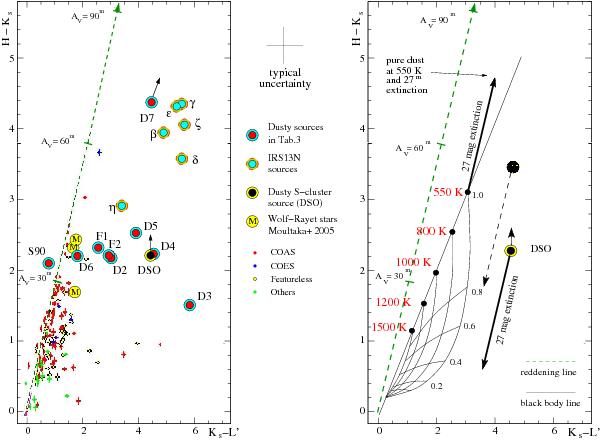Fig. 16

Left: colors of dusty objects in the central parsec of the Milky Way compared to the colors of young stellar objects as given by Hoffmeister et al. (2006). The labels COAS and COES indicate that the sources show CO absorption or emission in their spectra. Right: colors of dusty objects in the central parsec of the Milky Way compared to colors of pure dust (temperatures given in red numbers) and mixtures of a stellar and a dust contribution (fractional numbers given in black; see also Glass & Moorwood 1985). Here we demonstrate that a mixture of dust and stellar contribution is possible. Because the H − Ks color of DSO is an upper limit, its NIR emission can be explained as pure dust at 550 K reddened by ~27 mag, or as a star embedded in warm dust, e.g., if its color were detected to be H − KS ~ 3.5 mag (dashed circle), after dereddening by 27 mag, its emission would be consistent with 20% stellar and 80% dust contributions.
Current usage metrics show cumulative count of Article Views (full-text article views including HTML views, PDF and ePub downloads, according to the available data) and Abstracts Views on Vision4Press platform.
Data correspond to usage on the plateform after 2015. The current usage metrics is available 48-96 hours after online publication and is updated daily on week days.
Initial download of the metrics may take a while.


